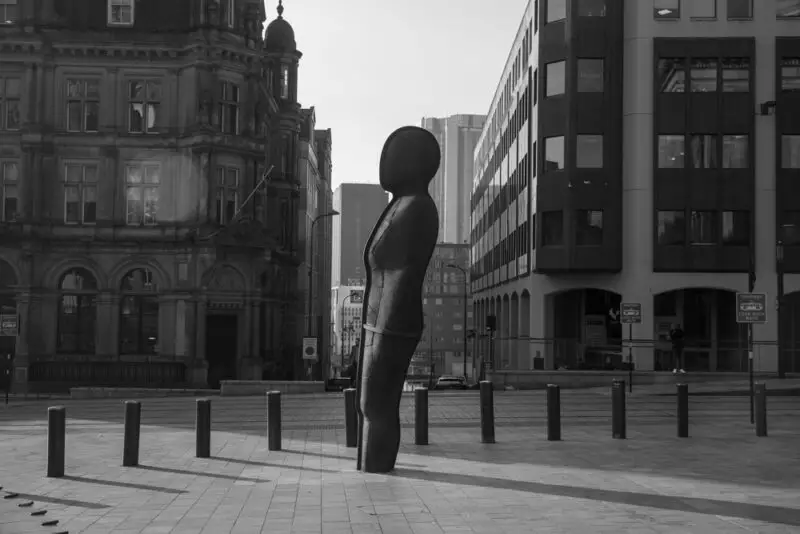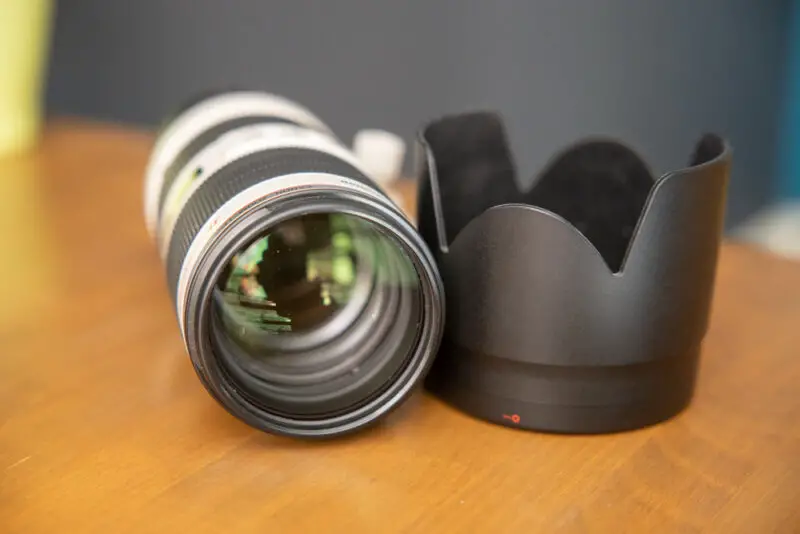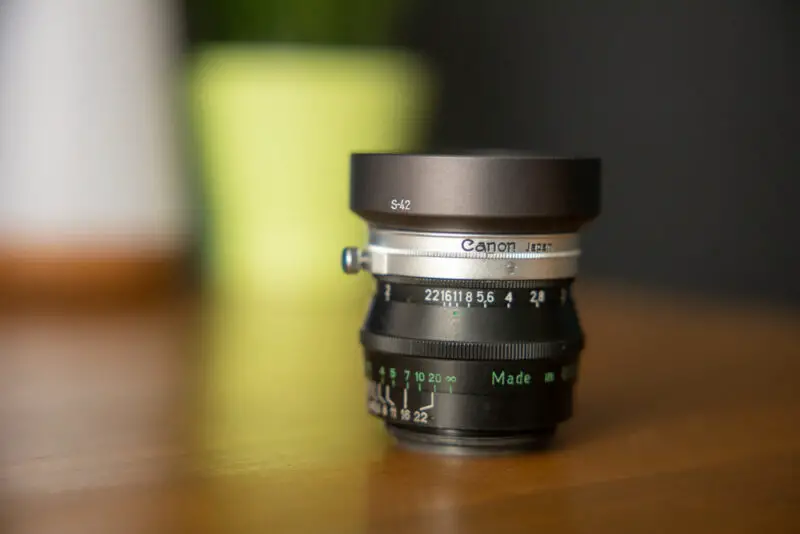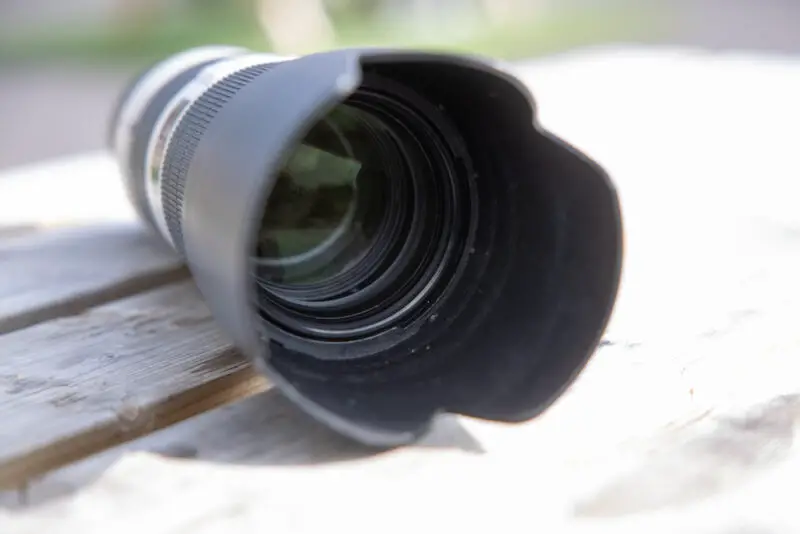The world of photography is an ocean of dozens of little gadgets and accessories that go far beyond the camera and lens themselves. One of these, the lens hood, is particularly controversial.
Some claim that it is absolutely essential in order to achieve high-quality pictures. In other words, even tripping the shutter once without a hood on your lens is the mark of an amateur who doesn’t know what they’re doing.
Others look down on hoods as an afterthought or a cash grab on the side of the big photo equipment companies. Which is it? What even is it, exactly? And should you use one?
These, and many more questions are what we are going to look at below. In this ultimate guide to lens hoods, you will learn everything you need to know about this subject. By the end, you’ll be able to make an informed decision for yourself: whether to get a lens hood – if so, what kind – and how to use it to bring out the best in your work.
What Is A Lens Hood?
First, we need to get some basics out of the way. A lens hood is nothing more than a piece of metal (or, more commonly these days, high-impact-plastic) that is mounted at the front of your lens. Yup. That’s it. Very simple, and in most cases, cheap too!
Below, we’ll go over the basics of using it, and the arguments for and against it. This way, you can decide for yourself whether a hood is really worth it for your own work.
What Is The Purpose Of A Lens Hood?
At its core, the lens hood is shaped in such a way and attached to the front element to shield it from light. However, it does not do the same thing as a filter would. It doesn’t actually reduce the amount of light hitting the sensor across the whole frame.
Instead, the lens hood just blocks light from extreme angles. In fact, you can try this out for yourself, which is useful for checking if a lens hood is fitted properly!
Put a filter on your lens – see as the frame immediately darkens due to the reduced exposure? Now, put a hood on. The viewfinder should remain completely unchanged.
Now you might be thinking: “If the hood doesn’t actually alter the exposure value in any way, then what does it do?”
This is where things get interesting.
The idea behind it originates from a very early photographic observation: shooting into the sun, since most of the time, this sucks. Shooting outdoors with light coming in from the sides also sucks.
If you’re lucky to even get a good exposure with the extreme dynamic range, then you’ll be greeted by lots of flare, sun streaks, and a “washed-out” look that is the opposite of desirable.
The lens hood single-handedly gets rid of these problems.
No, I’m not kidding! Not exaggerating either!
By only allowing light to enter your lens from specific angles, the lens hood prevents flares.
It reduces dynamic range because it gets rid of some of the high-brightness elements that would otherwise intrude in your shot. In doing so, it can add a healthy dose of contrast. This in turn helps make shots look more vivid and lifelike.
What Are The Advantages?
So, a lens hood can (theoretically) improve the quality of your outdoor shots by blocking stray light. Got it. But how does it actually hold up in practice? What are the reasons for putting a lens hood on when you go out to shoot?
Protection
You might have heard of some photographers leaving UV filters on their lenses permanently as a rule. This has often less to do with the quality of their shots and more with a concern for the lens.
We all know that pro lenses can fetch quite the top dollar – and when a lens breaks, it is often not just emotional, but also financially devastating. Whereas the old UV filter strategy is meant to protect the lens from harsh impacts or environmental damage, it’s only so-so in practice.
Enter the lens hood. If you’re a sports photographer, the hood dispels any fears of stray projectiles hitting your lens. If you shoot wildlife or travel a lot, the hood will also protect your lens from getting smudged, splashed, or scratched.
The list goes on: for countless applications, the lens hood presents itself as a practical, cheap, and convenient piece of protective gear.
A lot of hoods can also be installed in reverse, forming sort of a shield. This way, they add another layer of safety to the lens when packing into a camera bag.
Better Contrast
As I touched on above, the reduction of stray light that a lens hood provides helps increase contrast. Even in situations where there wouldn’t be a lot of flare anyway, the hood noticeably improves color rendition and makes outdoors scenes “pop” more effectively.
Eliminating Flares And Ghosts
This I already went over in detail earlier, so I will refrain from repeating myself more than necessary. As mentioned, the lens hood is the number-one remedy against flares and other unwanted light artifacts. Ghosts, which also occur due to light hitting the front element from a poor angle, are also greatly reduced if not completely eliminated.
What Are The Downsides?
Now, while the above list certainly sounds compelling, the reality is that not every single photographer out there will be walking around with a hood practically glued to their lens.
And, despite what some snobs and hardliners will claim, there are often fine reasons for that.
Bulk
Depending on your preferred genre of photography, the physical size of the lens hood might be a deal-breaker. There’s really no middle ground here.
In order for it to be effective, it has to extend from the front element by a certain distance. The exact dimensions generally depend on the lens design, but there is basically no lens hood that won’t add significant heft to your camera’s appearance.
Therefore, those who like to stay incognito might be better off leaving the hood in the bag.
Deliberate Flaring
Earlier, I praised lens hoods as the perfect “remedy” against flares. But what if flares are exactly what you want to have in your shot? This applies to plenty of photographers, from those dabbling in portraiture to landscapes. Sometimes, a flare – often with strongly defined star-shaped streaks – can add something truly magical to the composition.
Those photographers who want to include flares in their work deliberately would find it much easier to do so without a hood than with one.
Achieving A Soft Look
Particularly in color photography, a soft, washed-out look like the kind you get from the strong front or side lighting from the sun is undesirable. ְAgain though, some people’s artistic preference swims against the stream of conventional wisdom.
If you want your images to attain a soft, almost dream-like look, this is much easier to do without a lens hood. In fact, leaving the hood on will only add contrast and make colors pop more – exactly the opposite of what you might want!
Using Pop-Up Flash
Many cameras, particularly DSLRs, come with a small built-in pop-up flash. This is generally not as powerful or versatile as a proper flashgun, but it can be quite useful sometimes.
For example, many pros use it as a compact fill flash outdoors.
When doing so, you should note that many lens hoods will be so physically large that they will cut off some of the flash. This leaves dark splotches near the bottom edges of your frame.
If you want to avoid these unsightly aberrations, leave the hood at home when using pop-up flash.
Incompatibility Issues
Sometimes, putting a hood on your lens can actually hurt its usability by preventing you from mounting certain other accessories. For example, ring lights often require you to leave the lens “naked”, and some specialized filters work similarly.
How Do You Know Which Lens Hood Is Right For You?
Unless you are using truly ancient gear made before the 1950s, the way the hood fits on your lens is easy to grasp.
Nearly every lens today comes with a frontal filter thread, which also takes lens hoods.
Certain threads, like 52mm and 72mm, are so common that some photographers share the same thread across all their gear. Despite that, I wouldn’t advise cross-shopping hoods for lenses these days.
Almost any lens from Nikon, Canon, or Sony has an appropriate, tailor-made hood available.
Even if the lens hood doesn’t come with the lens out of the box, you should be able to order it separately. It’s extremely rare for a hood to cost much. Therefore, it’s not really worth it to go with anything except the hood specifically designed for your lens these days.
Still, in some cases, you will have more than one option for a lens hood. Some manufacturers let you choose between different designs per lens.
Fixed-lens cameras, like the popular Fujifilm X100 series, use a proprietary system for lens attachments. This has created a big aftermarket full of lens hoods available from many different brands.
So, how do you know which kind of lens hood is right for you? Let’s take a look.
The Types Of Lens Hoods
Lens hoods come in many shapes and sizes, and that’s not arbitrary! The design of a lens hood does indeed affect its performance. Generalizing just a tiny bit, we can group modern hood designs into a few distinct categories.
The Cylinder Lens Hood
This lens hood comes in the form of a long cylinder or an open barrel. The diameter can be constant or vary throughout the hood’s length. Some examples of these hoods often resemble more of a cone than a straight cylinder.
For simplicity’s sake, we will consider these to be still cylinder-type hoods since the practical differences are negligible.
In principle, the cylindrical lens hood blocks light uniformly within a certain radius surrounding your frame. Most prime lenses have cylinder hoods by default because the diameter and length of the cylinder can be nearly perfectly calibrated for the focal length of the lens.
Telephoto lenses, both primes, and zooms, also usually make use of cylindrical hoods because the narrow field of view means that a mostly straight-cut hood is most effective in blocking stray light.
The Petal Lens Hood
Other lens hoods forgo the symmetrical and uniform cylinder shape in favor of something called a “petal” design. A petal lens hood features some sections that are raised far forward beyond the lens element, and others that are more recessed.
The idea behind this is that in many zoom and wide-angle designs, a cylindrical hood would actually cut off parts of the frame at certain focal lengths. Thus, lenses that are capable of a wider angle of view usually come with petal hoods.
Of course, because the “petals” do not cover every side of the frame evenly, these designs are slightly less effective at keeping flare at bay. On the other hand, you retain full visibility.
Rangefinders and rangefinder-style cameras like the Leica also usually use petal designs for most of their lens hoods. The reasoning here is that, regardless of focal length, a large cylindrical hood lens would be so big that it would show up in the viewfinder window.
Unlike straight cylinders, a petal hood requires perfect alignment, with the raised and recessed sections corresponding to specific parts of the field of view. Therefore, it needs extra care when assembling.
Square Hoods
Some, like the Fujifilm X100, carry something in between a cylinder and a petal lens hood.
Here, the inside diameter of the hood traces the line of a rectangle or a square instead of a circle, but the outer edge of the hood remains uniform. This is done to achieve the benefits of a cylindrical hood, but without intruding on the viewfinder.
Square hoods are also common on some ultra-wide angle lenses where even a petal hood would not suffice.
Integrated Lens Hoods
Some lenses go even further than a tailor-made separate hood. How? By incorporating one into the lens barrel itself! Usually, this is done on long and heavy lenses where bulk or compactness is not a big concern.
The lens hood usually extends and retracts automatically, either coupled to the lens focus ring or the zoom ring depending on the design. In almost all cases these integrated hoods are cylindrical or conical.
Despite often lacking a hood per se, many macro lenses feature this capability as well. Because the front element is recessed very deeply into the lens body, they effectively copy the effects of a hood.
Which Lens Hood Should You Get?
The short answer to this question is what I already wrote above. That is, get the hood specifically made for your lens, and nothing but. Simple as that.
I would suggest you type the name of your lens (usually found on the front element and/or the side of the barrel) followed by something like “hood” or “lens hood” into Google. This should give you plenty of results for the manufacturer’s official lens hood recommendation for your model.
However, in cases where it’s not so easy, consider the differences between lens hood designs we just went over. If you are using a wide-angle lens, then a square, rectangular, or petal design would be most appropriate.
On midrange and telephoto zooms, a simple cylinder should be enough. If the low end of the zoom range goes wider, then a petal hood might work better.
Normal and telephoto primes also generally don’t need more than a straight, cylindrical hood.
A Case For The Universal Lens Hood – Is It Worth It?
While reading up so much about lens hoods, you might come across a certain kind of hood advertised as “universal”. In other words, a one-size-fits-all lens hood.
These have gone in and out of fashion for many years. In the 1980s they were a common sight on big zooms. More recently thanks to camera gear manufacturer KUVRD, universal lens hoods are all the rage once more.
Considering everything we just went over, this sounds too good to be true – but is it?
Honestly, the answer is “maybe”. It depends on what level of convenience versus performance you’re going for. It should be noted right away that no “universal” lens hood is ever going to be quite as good at mitigating flares and ghosts while improving colors and contrast as the hood specifically made for the lens.
When To Use Universal Lens Hoods
However, if you can stand that caveat, a universal lens hood can be quite handy. If you like to haul a lot of lenses around with you, then cutting down on weight is a big issue. Having just one hood instead of lots of them for each lens in your bag will definitely help with that.
“Universal” lens hoods might not cover every conceivable lens design, but they will do alright for most. Usually, they employ a flexible “concertina” structure made of silicone or some other synthetic material.
The idea is that you can mold the hood to fit the field of view of your particular lens. Another bonus is that these hoods can usually collapse to fit into a bag more easily.
Why Universal Lens Hoods Aren’t For Everyone
On the other hand, note that very few universal lens hoods cover every focal length and every filter thread size.
So, if most of your lenses use different threads, then a universal lens hood doesn’t really make sense. Since you’ll have to buy a few of them anyway, it will be more effective to just get individual hoods for each lens instead.
This is besides the fact that a universal lens hood will never perform quite as well as a dedicated one. Not just in terms of optical performance – we talked about that already.
Also as a protective gadget, universal lens hoods are close, but no cigar. Because they’re usually made of something soft and malleable like silicone, they don’t really offer the same degree of lens protection as sturdy plastic or metal hoods.
If you shoot outside in tough weather – such as heavy rain or strong winds – then a universal lens hood might just snap off, tear, or come out of alignment!
The Bottom Line – Should You Be Shooting With A Lens Hood?
Now, I understand that the above was a lot of info to take in. This is why I am going to get back to the basics down below and give you a neat little overview of when to use a lens hood, in the simplest possible terms.
When To Use A Lens Hood
Use a hood when shooting outside in natural lighting. This improves color rendition and contrast. It also gets rid of pesky flares and ghosts. Especially if your subject is lit from the side or the back, a lens hood is essential.
Below, you can see a before-and-after comparison to judge the difference for yourself.

Here, the shot was taken with the sun shining from overhead without a hood. Note the glare, ghosts, and flaring taking up a large part of the frame.

Taken from the exact same position moments after, but with a hood on. Note how much cleaner the scene looks this way!
Also, remember to use a lens hood when shooting in dangerous environments! The hood will keep the lens from being hit by projectiles, and in the case of rain or dust, it will prevent the front element from getting dirty.
Put a hood on when shooting at night! Most would assume that the low light levels outside would make a hood unnecessary during the dark hours, but that’s not true. Light sources at night, where they do appear, can be very intrusive and can cause very exaggerated flares and other artifacts.
Use a hood when shooting with an off-camera flash, as this will prevent the flash from flaring and overexposing your frame.
When Not To Use A Lens Hood
Don’t use a hood when you want to stay unnoticed – the added bulk of the hood can work against you in candid street photography, for example!
Don’t use a hood if you are using your camera’s built-in pop-up flash. The hood might block parts of the flash from reaching your subject, creating ungainly underexposed areas within your image.
If you’re actually aiming to use lens flares and other effects creatively, then a lens hood will only make your life harder. The same thing goes for shooting outdoors where a “dreamy”, soft look is the goal.

Here, shooting without a hood produced this faint flare off to the left side of the frame that actually added something to the composition. Without this little optical twist, the shot could have come out looking a lot less interesting!
And finally, forget about the hood if you need to use certain lens attachments or accessories that are incompatible with it. Good examples are ring lights, as well as some specialized filters.




